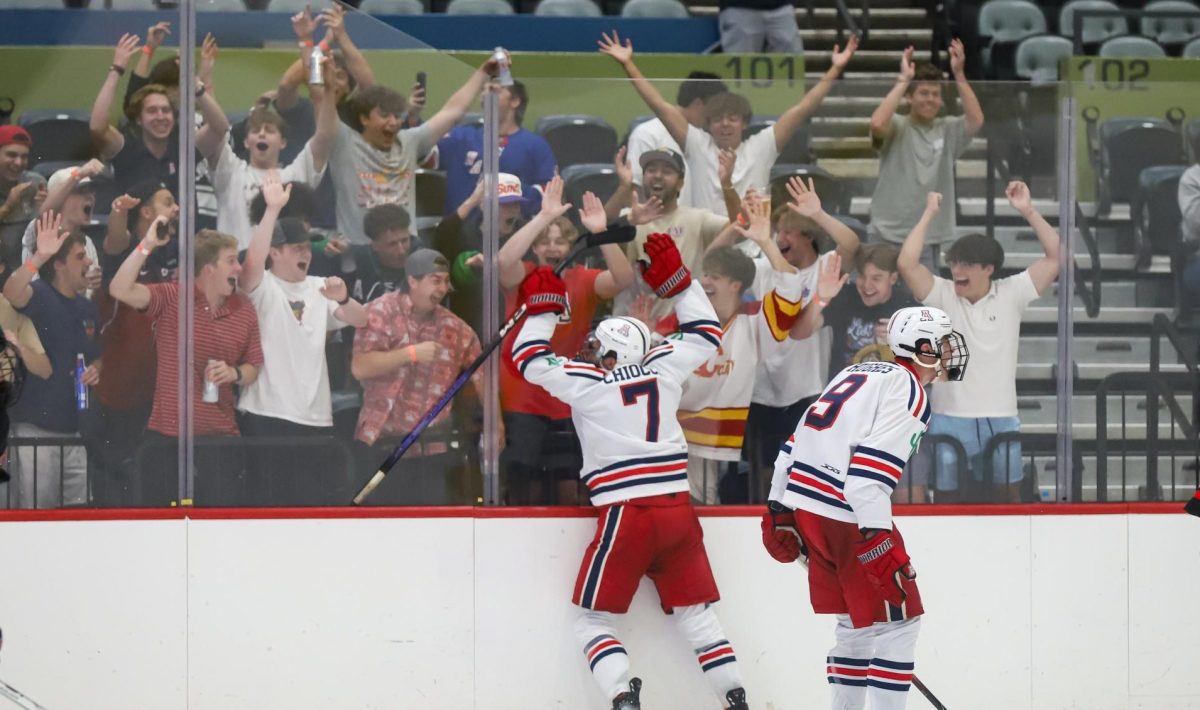There’s no point in beating around the bush or sugarcoating it: Stopping Oregon’s offense on Saturday will be very, very hard.
“”This is a very challenging week for everybody,”” head coach Mike Stoops said. “”I think when you look at Oregon play, their athleticism, their skill and their speed really jump out at you. Defensively, our discipline is going to be tested across the board in our assignments and our ability to slow them down.””
Oregon has perfected the spread-option offense under first-year head coach and former offensive coordinator Chip Kelly. The attack is based out of a shotgun formation and is centered on deception — lots of fake hand-offs and motion.
“”He’s very innovative offensively,”” Stoops said of his counterpart Kelly.
If Kelly is the innovator, then quarterback Jeremiah Masoli is the key to the invention. The junior, a transfer from the City College of San Francisco, has exploded onto the scene since making his debut last season and is the picture-perfect triggerman for Kelly’s offensive creation.
“”He handles the ball well,”” Stoops said when asked about Masoli. “”That quarterback can handle the football and he can throw. He makes a huge difference in a system like this.””
The system that Stoops refers to relies heavily on a quarterback that can run, and Masoli is an expert at that. In addition to throwing, Masoli has emerged as an elite runner thanks to his 558 yards and nine touchdowns on the ground.
The nitty gritty
Oregon’s offense, which is first in the Pacific 10 Conference in scoring, uses pre-snap reads to determine which play to run at the line of scrimmage. With each play that Oregon runs — with exceptions in long passing situations — the quarterback must make a choice: hand it off, keep it himself or pass it.
The offense uses lots of movement both in the backfield and on the line to confuse defenders who are too zeroed in on their reads.
“”They’re very, very difficult because they’re good in their scheme and then they’re good athletically,”” said defensive coordinator Mark Stoops. “”They zone-read everybody. The way they read, and the way they block, and the way they dress it all up, they’re very innovative.””
English, please!
Let’s squash a common misconception: defenders, contrary to popular belief, never look in the backfield to see where the ball is going — or at least they aren’t supposed to. Instead they are supposed read their “”keys”” and determine what to do through that.
When Stoops mentioned how they “”dress it all up”” he was referring to the way the Oregon offensive linemen don’t block in a traditional sense. Since Oregon has several possible plays to choose from, one side of the line could block differently from the other side.
In a traditional “”zone-read”” the running back runs a play to the right and the quarterback runs his play to the left. Therefore, the linemen on the right side block as if there is a run to the right, while the linemen on the left side block as if it is a run to the left.
How do they decide? The quarterback needs to read a specific defensive lineman. Which lineman he reads depends on where the running back is going.
“”The dynamic (between discipline vs. aggressiveness) is interesting because up front they may just let one of your (defensive) linemen go and he has to then tempo himself,”” Mark Stoops said. “”He’s getting off on the ball all day long, getting pushed and controlling his gap and then they just let him go and they’re going to read him, so if he’s three yards up the field then you’ve got problems.””
That is a short breakdown on the zone-read, Oregon’s basic play. Arizona defenders have spent countless hours in the film room this week studying traits of the Oregon offense and figuring out how they can make good reads and stay contained.
Defensive linemen need to be careful not to over-pursue, and defensive backs need to be able to help with the run while still defending the pass.
Regarding who will be in charge of controlling Masoli, Mark Stoops added, “”There’s no one position, I think it’s everybody.””








